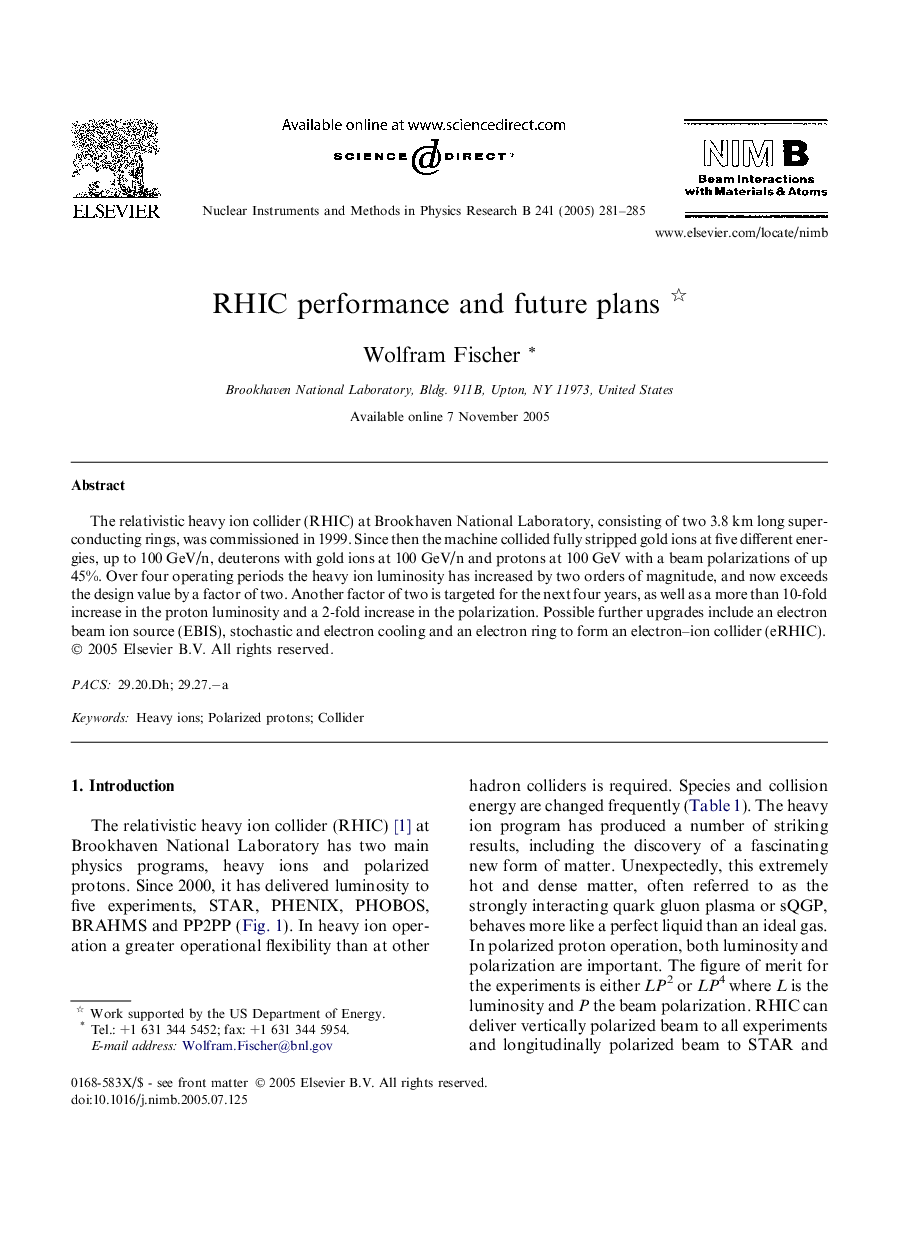| Article ID | Journal | Published Year | Pages | File Type |
|---|---|---|---|---|
| 9817449 | Nuclear Instruments and Methods in Physics Research Section B: Beam Interactions with Materials and Atoms | 2005 | 5 Pages |
Abstract
The relativistic heavy ion collider (RHIC) at Brookhaven National Laboratory, consisting of two 3.8Â km long superconducting rings, was commissioned in 1999. Since then the machine collided fully stripped gold ions at five different energies, up to 100Â GeV/n, deuterons with gold ions at 100Â GeV/n and protons at 100Â GeV with a beam polarizations of up 45%. Over four operating periods the heavy ion luminosity has increased by two orders of magnitude, and now exceeds the design value by a factor of two. Another factor of two is targeted for the next four years, as well as a more than 10-fold increase in the proton luminosity and a 2-fold increase in the polarization. Possible further upgrades include an electron beam ion source (EBIS), stochastic and electron cooling and an electron ring to form an electron-ion collider (eRHIC).
Related Topics
Physical Sciences and Engineering
Materials Science
Surfaces, Coatings and Films
Authors
Wolfram Fischer,
